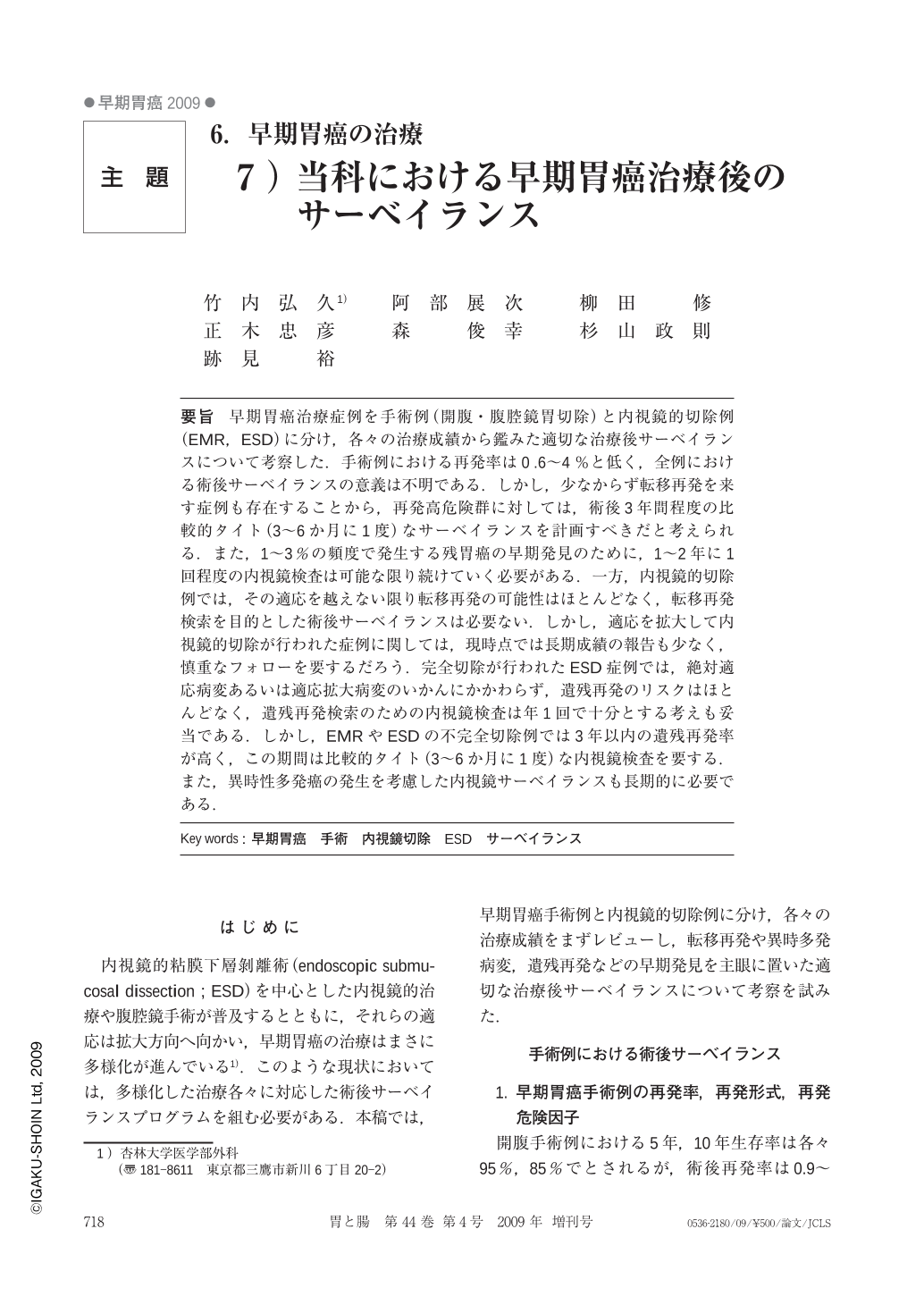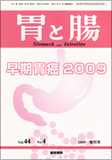Japanese
English
- 有料閲覧
- Abstract 文献概要
- 1ページ目 Look Inside
- 参考文献 Reference
- サイト内被引用 Cited by
要旨 早期胃癌治療症例を手術例(開腹・腹腔鏡胃切除)と内視鏡的切除例(EMR,ESD)に分け,各々の治療成績から鑑みた適切な治療後サーベイランスについて考察した.手術例における再発率は0.6~4%と低く,全例における術後サーベイランスの意義は不明である.しかし,少なからず転移再発を来す症例も存在することから,再発高危険群に対しては,術後3年間程度の比較的タイト(3~6か月に1度)なサーベイランスを計画すべきだと考えられる.また,1~3%の頻度で発生する残胃癌の早期発見のために,1~2年に1回程度の内視鏡検査は可能な限り続けていく必要がある.一方,内視鏡的切除例では,その適応を越えない限り転移再発の可能性はほとんどなく,転移再発検索を目的とした術後サーベイランスは必要ない.しかし,適応を拡大して内視鏡的切除が行われた症例に関しては,現時点では長期成績の報告も少なく,慎重なフォローを要するだろう.完全切除が行われたESD症例では,絶対適応病変あるいは適応拡大病変のいかんにかかわらず,遺残再発のリスクはほとんどなく,遺残再発検索のための内視鏡検査は年1回で十分とする考えも妥当である.しかし,EMRやESDの不完全切除例では3年以内の遺残再発率が高く,この期間は比較的タイト(3~6か月に1度)な内視鏡検査を要する.また,異時性多発癌の発生を考慮した内視鏡サーベイランスも長期的に必要である.
In this study we considered appropriate levels of post-therapeutic surveillance based on treatment outcomes, dividing subject procedures into two groups : early gastric carcinoma operations and endoscopic resections. Although the incidence of recurrence within gastric operation cases is low at between 0.6% and 4%, in all cases the significance of exploratory post-operative surveillance targeting evidence of metastatic recurrence is unclear. However, as there are quite a few cases resulting in metastatic recurrence, we believe that physicians and patients should plan for relatively tight surveillance levels(once every 3 to 6 months)for three years post-operation, especially in patient groups with a high risk of recurrence. It is further necessary to maintain whenever possible an endoscopic examination regimen at a rate of once every 1 to 2 years in order to facilitate early detection of any residual gastric carcinoma, which occurs in between 1% and 3% of cases.
By contrast, in endoscopic resection cases, unless the particular case indicates a special need for surveillance, there is no necessity for exploratory post-operative surveillance targeting evidence of metastatic recurrence because the possibility of metastatic recurrence is almost nil. However, in cases of enlarged indications where an endoscopic resection has been performed, at the present time there are very few long-term performance reports, so measured follow-up surveillance activities are probably needed. In ESD(endoscopic submucosal dissection)cases where complete resections have been performed, the risk of residual recurrence is almost nonexistent, regardless of whether the case involves pathologies of absolute or enlarged indications, so we concur with the belief that one endoscopic examination per year to search for any residual recurrences is sufficient. However, in cases of incomplete resection involving either EMR(endoscopic mucosal resection)or ESD procedures, the incidence of residual recurrence is high within the first 3 years, so during this period a relatively tight schedule(once every 3 to 6 months)of endoscopic examinations is necessary. Endoscopic surveillance that considers the possible occurrence of metachronous multiple carcinomas is also needed in the long term.

Copyright © 2009, Igaku-Shoin Ltd. All rights reserved.


